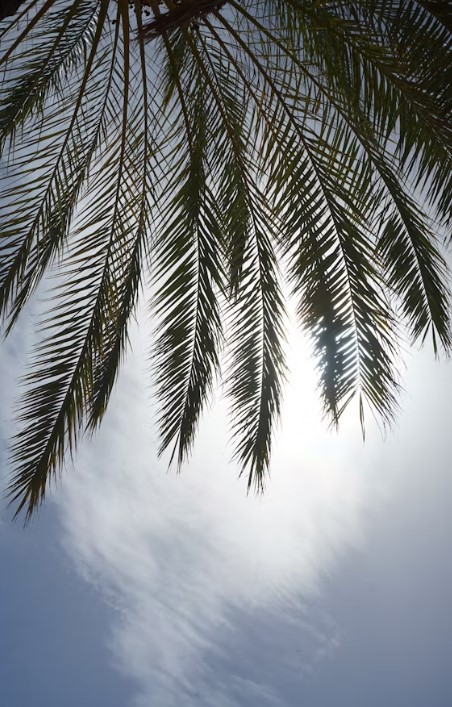Contents
Travelers Palm
The Total Direct to the Travelers Palm: Nature’s Living Compass and Water Supply
The Travelers Palm (Ravenala madagascariensis), in spite of its common title, isn’t really a genuine palm but or maybe one of nature’s most uncommon structural wonders. This wonderful plant, local to the intriguing island of Madagascar, has captivated botanists, landscapers, and nature devotees around the world with its particular fan-shaped crown and exceptional survival adjustments. Known by different names counting the Traveller’s Tree and East-West Palm, this marvelous example has earned its moniker through captivating legends and down to earth applications that have supported travelers for centuries. Standing as a living confirmation to Madagascar’s special biodiversity, the Travelers Palm speaks to both normal excellence and utilitarian plan within the plant kingdom.
H2: Botanical Classification and Characteristics
H3: Genuine Character: Not Really a Palm
The Travelers Palm has a place to the family Strelitziaceae, making it a near relative of the Fowl of Heaven plant instead of a genuine palm. This botanical qualification is significant for understanding its care prerequisites and development designs. As a monocotyledonous blossoming plant, it offers characteristics with other individuals of the Strelitziaceae family, counting comparable bloom structures and development propensities.
The classification disarray stems from its palm-like appearance and common title, but understanding its genuine botanical personality makes a difference clarify why it requires distinctive care than conventional palms. Not at all like genuine palms that have a place to the Arecaceae family, the Travelers Palm has one of a kind blossoming characteristics and development designs that set it separated from routine palm species.
H3: Physical Characteristics and Growth Pattern
The Travelers Palm creates into a huge blooming tree with a unmistakable palm-like trunk topped by expansive, banana-like clears out orchestrated in a marvelous fan arrangement. This evergreen monster regularly comes to statures of 20 meters (65 feet), in spite of the fact that extraordinary examples have been recorded developing up to 30 meters (98 feet) tall.
The round and hollow stems back gigantic clears out that can develop between 8-15 feet long, making one of nature’s most amazing common figures. The takes off rise from the central developing point in a exact fan course of action, making the unmistakable outline that creates this plant immediately recognizable. Each leaf can span a few feet in width, contributing to the plant’s emotional nearness in any scene.
The trunk structure contrasts essentially from genuine palms, creating a more conventional tree-like base that can department at ground level on the off chance that suckers are not evacuated. This branching propensity influences the plant’s generally frame and requires particular administration methods to preserve the classic single-trunk appearance.
H2: Native Habitat and Natural Distribution
H3: Madagascar: The Island Domestic
The Travelers Palm is endemic to Madagascar, where it has advanced interesting characteristics that reflect the island’s particular environment. Madagascar’s segregation as an island landmass has made conditions that cultivated the improvement of this surprising species over millions of a long time.
In their local living space, Traveler’s Palms flourish in different scenes counting rainforests, muggy woodlands, and along conduits, where they appreciate warm temperatures, tall stickiness, and reliable precipitation. The plant’s characteristic dispersion over Madagascar’s differing microclimates has contributed to its flexibility and strength.
The species has advanced to require advantage of Madagascar’s regular precipitation designs and has created water-storing capabilities that offer assistance it survive periods of diminished precipitation. This adjustment has made it especially important to both natural life and human populaces in its local run.
H3: Environmental Conditions in Natural Habitat
Madagascar’s climate gives the idealize format for understanding the Travelers Palm’s prerequisites. The island experiences specific moist and dry seasons, with the plant tolerating endless moistness in the midst of the stormy season and depending on its water capacity capabilities in the midst of drier periods.
The common creating conditions join temperatures that once in a whereas drop underneath 15°C (59°F), with perfect ranges between 20-30°C (68-86°F). Mugginess levels inside the neighborhood environment frequently remain over 60%, as often as possible coming to 80-90% in the midst of the clammy season. These conditions have molded the plant’s physiological prerequisites and prompt advancement sharpens around the world.
The wealthy, well-draining soils of Madagascar’s stream valleys and woodland floors give the wholesome establishment that bolsters the plant’s noteworthy development. These soils are ordinarily tall in natural matter and keep up steady dampness without getting to be waterlogged.
H2: The Legend Behind the Title
H3: Verifiable Beginnings and Social Importance
The plant earned its common title “Traveler’s tree” since the water it gathers in its leaf bases has been utilized in crises for drinking. This viable application has made it amazing among pioneers, dealers, and nearby populaces all through Madagascar’s history.
The legend recommends that the plant’s fan-shaped crown actually adjusts along an east-west pivot, giving directional direction to misplaced travelers. Whereas this compass hypothesis has been wrangled about by botanists, the plant’s down to earth esteem as a water source remains evident and socially noteworthy.
Neighborhood Malagasy individuals have long recognized the plant’s esteem, joining it into conventional hones and old stories. The plant serves numerous purposes in neighborhood communities, from giving crisis water to providing materials for development and creates.
H3: Water Storage Mechanism
The Travelers Palm’s capacity to gather and store water speaks to one of nature’s most bright survival procedures. The expansive leaf bases frame normal stores that can hold a few liters of water. This put away water remains moderately clean and consumable, making it a solid crisis asset.
The plant’s leaf structure channels water proficiently into these capacity regions, with specialized channels and collection focuses that maximize water maintenance. Amid dry periods, this put away water makes a difference support the plant and gives assets for natural life and human needs.
This water capacity capability has been recorded by various pilgrims and botanists, affirming the down to earth premise for the plant’s incredible status. The instrument speaks to millions of a long time of developmental adjustment to Madagascar’s variable climate conditions.
H2: Developing Conditions and Climate Prerequisites
H3: Temperature and Stickiness Inclinations
The Travelers Palm is winter solid to USDA Zones 10-11, disdaining temperatures that drop underneath 60 degrees F and cannot endure temperatures underneath 40 degrees F. This temperature affectability limits open air development to tropical and subtropical locales with reliable warmth.
For ideal development, the plant requires assurance from temperatures underneath 40 degrees F, in spite of the fact that in colder regions it can be developed in nurseries with satisfactory space contemplations. The plant’s tropical roots cruel it performs best with reliable temperatures between 65-85°F (18-29°C).
Stickiness prerequisites are noteworthy, with the plant leaning toward levels over 50% and flourishing in conditions with 60-80% stickiness. In dry climates, supplemental stickiness through moistening frameworks or humidifiers gets to be basic for solid development and leaf advancement.
Growing Parameter
Optimal Range
Minimum Requirement
Notes
Temperature
65-85°F (18-29°C)
Above 40°F (4°C)
Cannot tolerate frost
Humidity
60-80%
Above 50%
Requires supplemental humidity in dry climates
Light
Full sun to partial shade
Bright indirect light minimum
Tolerates some shade when young
Soil pH
6.0-7.5
5.5-8.0
Prefers slightly acidic to neutral
Water
Consistent moisture
Never completely dry
Deep watering preferred
H3: Light Requirements and Sun Exposure
The Travelers Palm performs best when developed in full sun, in spite of the fact that it can endure halfway shade conditions. Plants ought to be situated in zones ensured from solid winds, which can harm the huge takes off and compromise the plant’s auxiliary keenness.
Youthful plants can endure more shade than develop examples, making them appropriate for continuous acclimatization to full sun conditions. In any case, deficiently light will result in slower development, decreased leaf estimate, and less sensational fan advancement.
The plant’s huge clears out are planned to capture most extreme daylight whereas giving a few self-shading for the trunk and root zone. This characteristic plan makes a difference direct temperature and dampness around the base of the plant.
H2: Soil Requirements and Planting Considerations
H3: Soil Composition and Seepage
The Travelers Palm flourishes in profound, prolific, naturally wealthy, modestly wet, well-drained soils. Great soil ought to contain parcels of natural matter such as coco coir as well as perlite or vermiculite to assist with waste.
The perfect soil composition combines water maintenance with waste capabilities, avoiding both dry season push and root decay. A blend of quality preparing soil, compost, perlite, and natural matter makes the idealize developing medium for holder development.
For in-ground planting, soil planning ought to incorporate joining liberal sums of compost and natural matter to progress both waste and water maintenance. The planting zone ought to be corrected to a profundity of at slightest 2-3 feet to suit the plant’s broad root framework.
H3: Holder Developing vs. In-Ground Planting
Holder developing offers adaptability for climate control and winter assurance in negligible zones. Huge holders (least 50 gallons for develop plants) are fundamental to back the plant’s estimate and root advancement. Holder plants require more visit watering and fertilization than ground-planted examples.
In-ground planting gives the finest conditions for accomplishing greatest measure and the foremost noteworthy show. In any case, this alternative is restricted to reliably warm climates where temperatures never approach solidifying levels.
The choice between holder and ground planting ought to consider long-term estimate desires, climate confinements, and support capabilities. Holder plants can be moved for winter security but gotten to be progressively troublesome to handle as they develop.
H2: Watering and Irrigation Strategies
H3: Water Prerequisites and Planning
The plant ought to be watered more habitually than normal houseplants particularly within the spring and summer, with fast-draining soil being best. The watering plan ought to reflect the plant’s common adjustment to monsoon-like conditions taken after by drier periods.
To duplicate characteristic developing conditions, plants ought to be moistened with warm water day by day or kept close a humidifier. This moistening makes a difference keep up the tall mugginess levels the plant requires whereas giving supplemental dampness for the expansive leaf surfaces.
Profound, intensive watering is favored over visit shallow watering. This energizes profound root advancement and makes a difference set up the plant’s common water capacity instruments. Amid dynamic developing seasons, the soil ought to stay reliably sodden but never waterlogged.
H3: Regular Water Alterations
Water necessities shift altogether with seasons and climate conditions. Amid summer months and dynamic developing periods, expanded recurrence and volume of watering back quick development and huge leaf advancement.
Winter watering ought to be decreased but not disposed of, keeping up soil dampness without making wet conditions. In warmed indoor situations, winter discuss dryness may really require expanded stickiness supplementation in spite of diminished soil watering.
Checking soil dampness at different profundities makes a difference decide ideal watering plans. The best inch of soil ought to be permitted to dry somewhat between waterings, whereas more profound soil layers ought to stay reliably sodden.

